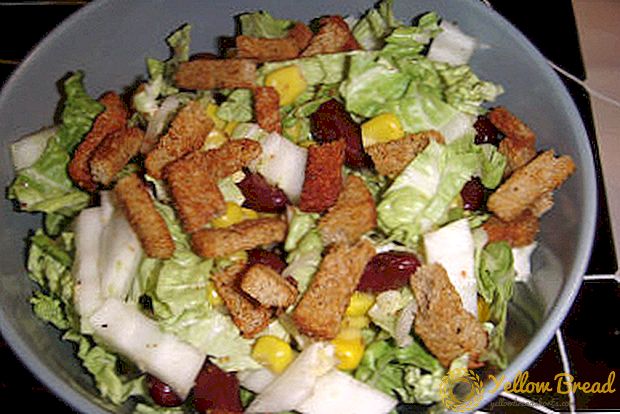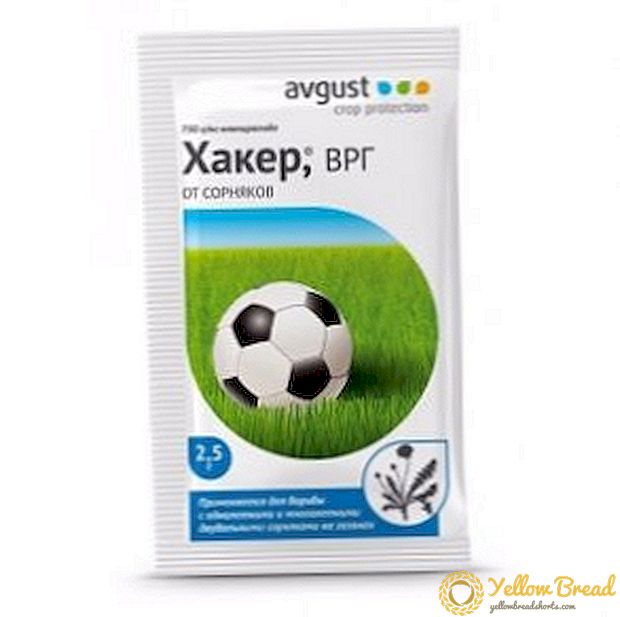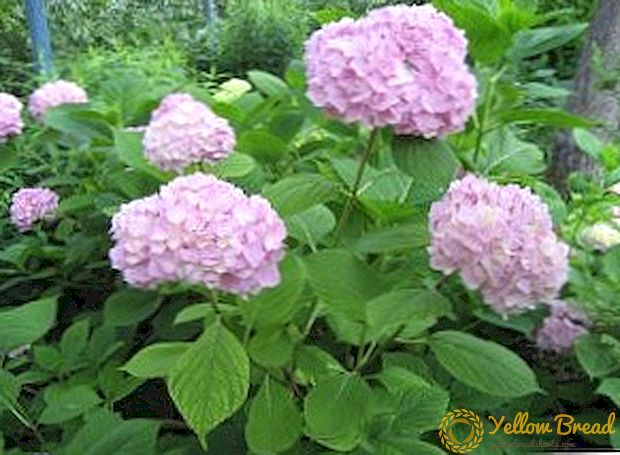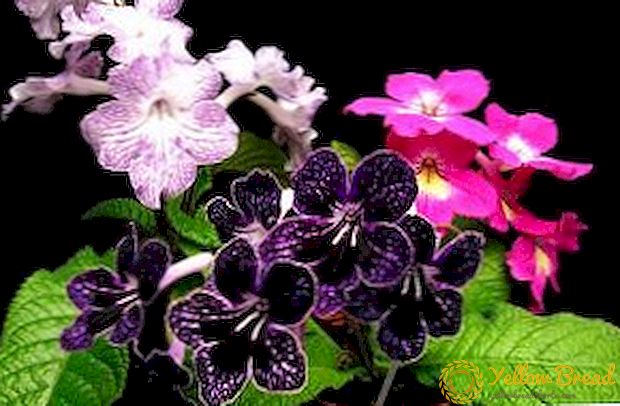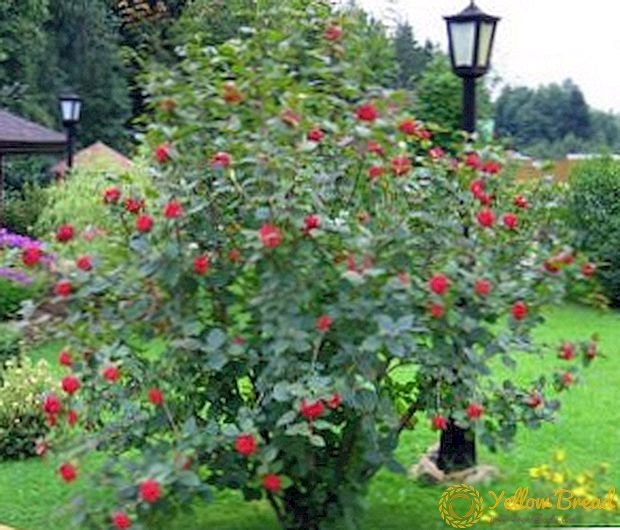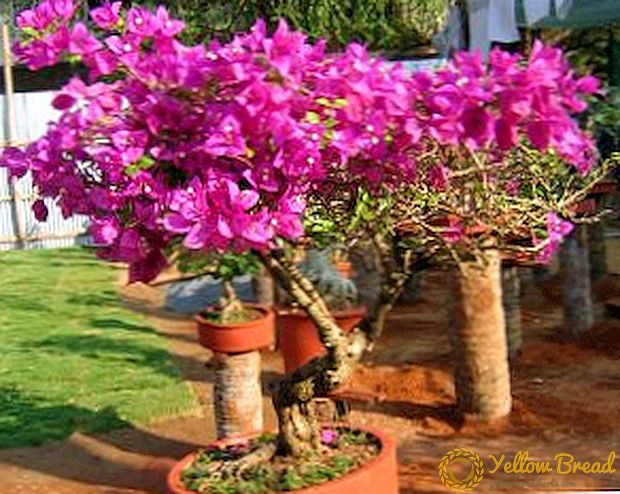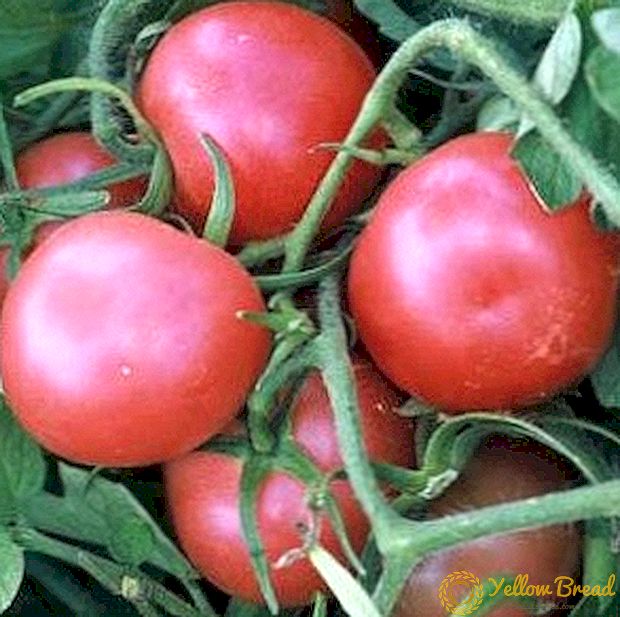
To the gardeners preferring undemanding tomatoes who calmly tolerate the vagaries of the weather, the variety will suit "Rose of Wind"specially developed for regions with unpredictable climate.
Compact bushes are remarkable for their durability, they are not afraid of short-term frosts, heat, lack of water or excessive moisture. A great bonus is high yield.
Tomato "Wind Rose": description of the variety and photos
Variety of Russian breeding, recommended for the northern regions. Possible cultivation in greenhouses and open ground. The harvest is well stored and transported. Tomatoes harvested in the technical ripeness phase can ripen at room temperature.
 Rose of Winds - an early ripe high-yielding grade. Bush determinant, standard.The leaves are dark green, medium size, slightly corrugated, greens plentiful. Productivity is excellent, from 1 square. m planting can be collected up to 7 kg of ripe tomatoes. Fruit ripening is friendly, from the end of July to the beginning of September.
Rose of Winds - an early ripe high-yielding grade. Bush determinant, standard.The leaves are dark green, medium size, slightly corrugated, greens plentiful. Productivity is excellent, from 1 square. m planting can be collected up to 7 kg of ripe tomatoes. Fruit ripening is friendly, from the end of July to the beginning of September.
Advantages and disadvantages
Among the main advantages of the variety:
- high taste of fruits;
- tomatoes are well kept;
- compact bushes that do not require formation;
- tolerance to temperature fluctuations;
- resistance to major diseases.
There are practically no flaws in the variety.
Characteristics of the fruit
- Fruits are large, even, rounded.
- The skin is moderately dense, glossy.
- During ripening, the color changes from green to warm pink.
- The flesh is juicy, not watery, pleasant sweetish taste.
- Seed chambers a little, the high content of sugars, amino acids and beta-carotene allows us to recommend fruits for baby and dietary food.
The variety is lettuce, fruits are used to prepare snacks, soups, hot dishes, sauces and mashed potatoes. Ripe fruit produces a delicious thick juice of the original pink color. Canning is possible.
Photo tomato "Wind Rose":



Features of growing
Like other early ripe tomatoes, the Wind Rose is sown on seedlings in March and early April. Tomatoes need light nourishing soil consisting of garden soil and peat.
Before planting, seed is soaked in a growth promoter. For germination the temperature is about 25 degrees. After emergence of shoots the container with seedlings is exposed to bright light. Picks are carried out in the phase of the formation of these leaves, then the seedlings are fed with a solution of a complete complex fertilizer. Seedlings are planted in a greenhouse or in the ground in early June.
Grown up plants are watered abundantly, but not too often, 1 time in 6-7 days. Tomatoes tolerate a small drought or waterlogging, but compliance with the irrigation regime provides the best yield. It is not necessary to form plants, but too heavy branches will have to be tied up.
 Every 2 weeks the bushes are fed with a liquid complex fertilizer with a predominance of potassium and phosphorus. Sometimes you can indulge tomatoes with organic matter: bird droppings or diluted mullein.
Every 2 weeks the bushes are fed with a liquid complex fertilizer with a predominance of potassium and phosphorus. Sometimes you can indulge tomatoes with organic matter: bird droppings or diluted mullein.
Pests and diseases
The variety is resistant to major diseases. However, trouble can happen to him. Detect problems will help regular inspection of landings. Having noticed the first signs of late blight, it is necessary to immediately tear off the affected leaves and fruits and treat the plants with copper preparations. Soft brown spots on the stalks indicate a lack of calcium. The problem will remove dressing calcium nitrate.
Insect pests and their larvae greatly harm the juicy greens of tomatoes. Get rid of the aphids will help warm soapy water, which washed the stalks and leaves. You can scare away naked slugs by regular spraying with an aqueous solution of ammonia.Insecticides protect against thrips and spider mites, but they can only be used before fruiting.
"Rose of Wind" - A variety that deserves close attention. It will suit even those who have already planted several types of tomatoes in the greenhouse. Severe Rose does not claim shelter, she feels good in the open field, does not get sick and brings a bountiful harvest.

